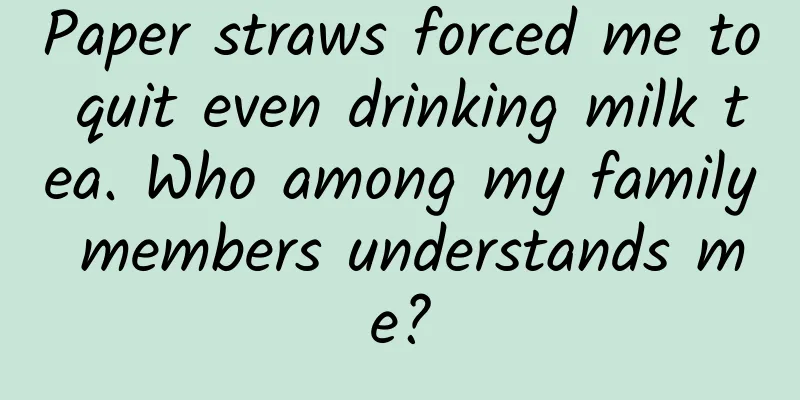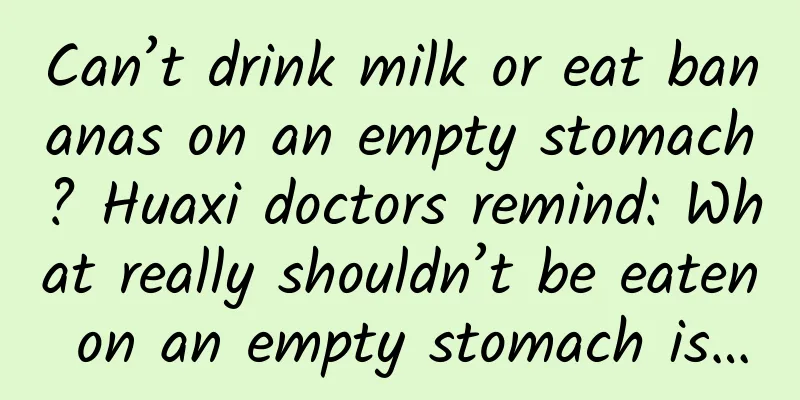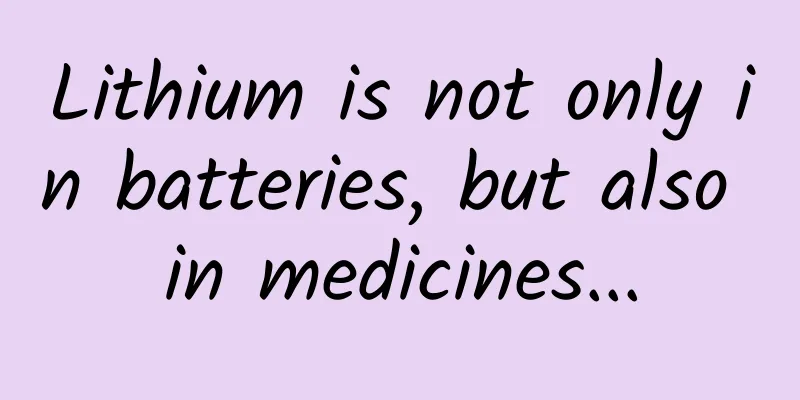Paper straws forced me to quit even drinking milk tea. Who among my family members understands me?

|
What can make young people quit drinking coffee? You think it's the sauce latte? Wrong! It's a small paper straw, my friends! The paper tape that has been soaked in the mouth, the paper stained with coffee... the coffee in your hand instantly loses its fragrance! Image taken from social media On New Year's Day 2021, the most stringent upgraded version of the "plastic restriction order" in history was officially implemented. Since then, the catering industry across the country is no longer allowed to use non-degradable disposable plastic straws. In this way, the "difficult to use" paper straws came out with the label of "environmentally friendly and safe". But are they really more environmentally friendly and safer than plastic straws? Let's talk about it today~ Are paper straws really safer than plastic straws? Many people think that using paper straws to replace plastic straws is good because it is environmentally friendly and safe. In fact, paper straws also have safety risks. Image source: unsplash, Photographer: Meghan Rodgers A recent Belgian study tested 39 brands of straws from restaurants and retailers and found that most contained chemicals called polyfluoroalkyl substances (PFAS). PFAS is a chemical raw material that can be used to make a variety of daily products such as outdoor clothing and non-stick pans. It is waterproof, heat-resistant and stain-resistant. However, it has potential hazards to humans, animals and the environment, such as causing thyroid disease, increased cholesterol levels, liver damage and increased risk of some cancers. It decomposes very slowly and can accumulate in the environment and exist for thousands of years, so it is called a "permanent chemical." The 39 different brands of straws tested were made of five materials: paper, bamboo, glass, stainless steel and plastic. The results showed that most brands (27, accounting for about 69%) contained PFAS, and a total of 18 different PFAS were detected. PFAS was detected in 90% of paper straws, 80% of bamboo straws, 75% of plastic straws and 40% of glass straws. Only 5 steel straws were not detected. It can be seen that paper straws are not necessarily safer than plastic straws. However, the concentration of PFAS detected is very low, and most people only use straws occasionally, so the risk to human health is limited. But here we need to remind everyone that when you buy milk tea or juice on the street and drink it with a straw, try not to ignore the possibility that harmful substances may enter the body through the straw! Paper straws are not so environmentally friendly, nor are they so useful Another important reason why many people use paper straws is that "paper straws are more environmentally friendly." In fact, paper straws are indeed more environmentally friendly than plastic straws, but they are not perfect. First of all, paper straws are more expensive. The use of paper straws not only wastes wood resources, but also produces a large amount of sewage. The production cost of paper straws is more than twice that of plastic straws. The cost of a plastic straw can be controlled at about 3 cents, while the cost of a paper straw is 10 cents, which is 3 times that of a plastic straw. Paper straws are made of paper, and during the production process, a large number of trees will be cut down, and there will also be problems such as sewage discharge, which will put a heavy burden on the environment. Moreover, many paper straws are not pure paper. There may be polyethylene or polypropylene plastic coatings on the inside, which cannot be completely degraded during the degradation process. Secondly, paper straws are not very user-friendly. Image taken from social media Paper straws will become soft and affect the taste if soaked in beverages for a long time. I think everyone who has used it should have experienced this. If you go to a physical milk tea shop and observe, you will find that if there are both paper straws and plastic straws on the counter, most people will still choose plastic ones. There have been reports in the UK that due to consumer complaints that paper straws are too soft, some businesses have had to make paper straws thicker and thicker, resulting in the straws being too thick to be recycled by recyclers even though the material is biodegradable. In the end, they had to switch back to plastic straws. In addition to paper straws, what other materials are straws made of? Currently, the most popular alternative to plastic straws on the market, apart from paper straws, are polylactic acid straws (i.e. PLA straws). PLA (Poly-Lactic Acid), also known as polylactic acid in Chinese, is made by saccharifying starch raw materials to obtain glucose, which is then fermented with glucose and certain bacteria to produce high-purity lactic acid, which is then synthesized through chemical synthesis to make straws. Common starch raw materials include corn and cassava. PLA is now the most widely used because of its excellent gloss and barrier properties, good biocompatibility, and biodegradability . However, PLA also has prominent disadvantages. It has poor heat resistance and insufficient toughness. It lacks flexibility and elasticity. Its thermal softening temperature is below 70°C. It is easily degraded and becomes brittle after being made into products. It cannot be used in hot liquids . In addition, there are some less popular options such as glass, stainless steel, and straws. Image source: unsplash Photographer: David Lalang But from the perspective of usage, plastic is still the most practical, which is why plastic straws were used before. It’s just that now due to environmental issues, we hope to reduce the use of plastic straws. Therefore, I personally recommend that you don’t use straws if you can avoid it! References [1] https://www.cnbeta.com.tw/articles/science/1380613.htm [2] Boisacq P, De Keuster M, Prinsen E, Jeong Y, Bervoets L, Eens M, Covaci A, Willems T, Groffen T. Assessment of poly- and perfluoroalkyl substances (PFAS) in commercially available drinking straws using targeted and suspect screening approaches. Food Addit Contam Part A Chem Anal Control Expo Risk Assess. 2023 Aug 24:1-12. doi: 10.1080/19440049.2023.2240908. Epub ahead of print. PMID: 37619405. [3] https://scjg.tj.gov.cn/tjsscjdglwyh_52651/hdpt/cjwtyxfts/202106/t20210601_5467414.html Planning and production Author: Ruan Guangfeng, Deputy Director of Kexin Food and Health Information Exchange Center Review | Zhong Kai, Researcher at the National Food Safety Risk Assessment Center Planning丨Yinuo Editor: Yinuo |
>>: Can ordinary people tell the difference between natural diamonds and artificial diamonds?
Recommend
Ideal Auto official: It will take only 47 months for Ideal Auto's 500,000th mass-produced car to roll off the assembly line in September 2023
According to Li Auto, Li Auto's 500,000th mas...
Jia Yueting suddenly spoke on Weibo: Release of new Faraday V9 model
Jia Yueting said: "Thank you for your attent...
10 essential tools for short video operations!
Tool 1: First, you need an iPhone X or Huawei P30...
Top 10 advertising and marketing failures in the first half of 2021
Before we knew it, half of 2021 has passed. Stand...
China Passenger Car Association: In January 2025, the national passenger car wholesale volume was 2.101 million new energy vehicles, a year-on-year increase of 27.1%
According to the latest data released by Cui Dong...
Electric Technology Car News: Are cheap MPVs bad products? The Lifan Xuanlang, which starts at RMB 70,000, makes it harder for joint venture cars to sell.
Today's domestic MPV market can be said to ha...
Try to implement React Native application on iOS and Android
We live in an age where everything can be shared,...
The competition in new energy sources has started a new round of elimination. How can domestic brands innovate the old overseas expansion paths of Japanese and Korean brands?
It is almost well known that Japanese cars are se...
The first battle of 2022 space launch was a success! my country successfully launched the test satellite No. 13
Good news about a "good start" from Chi...
How to master the activity operation planning of financial products?
Event planning ability is a standard requirement ...
Product Operation: How to acquire new users?
Inviting friends means letting old users invite n...
I would like to call this Android automation APP a magic tool!
[[385362]] Friends who have used Android phones s...
8 ideas for Baidu promotion plan
In fact, promoting the Internet is not difficult,...
Tips for making popular short videos!
I have always wanted to interview Zhu Feng to tal...
Lemongrass, the lifelong enemy of some people
When it comes to ingredients that are “one man’s ...









